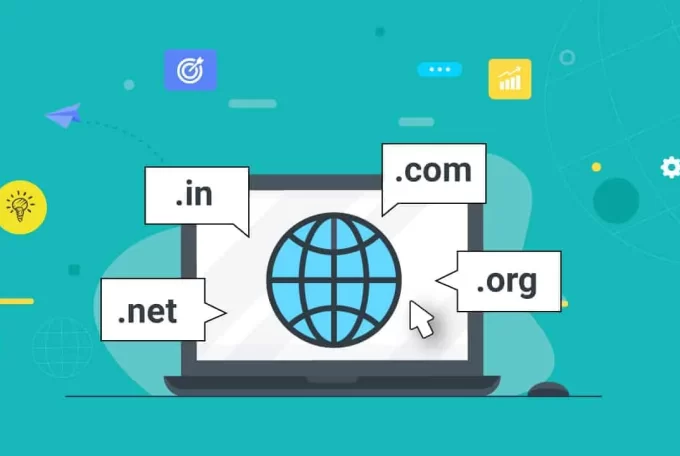A lot of things have changed last year.
People have had to stay inside to stay safe. But just because we needed to stay indoors and isolate, it didn’t mean that businesses could just come to a stop. And in an attempt to keep going, many companies have migrated from offices to working from home arrangements.
With this huge and sudden change, a lot of people have struggled to cope and find the rhythm that they used to have when they were working in an office.
Surprisingly though, studies show that employees who work from home are reported to be slightly more productive in comparison to employees who work in the office.
With all this in mind, what can we do to improve our productivity? It’s important to note that even though these concepts promote productivity universally, their implementations may vary depending on the workplace.
1. Delegate Tasks
It’s true that the delegation of tasks can be risky for a manager. If the manager miscalculates the skills and abilities of an employee, the effects can be detrimental, stressful, and counter-productive.
But then again, if one employee does all the work, it can also mean trouble. The quality of work is jeopardized and the employee most likely will experience burnout.
Delegating tasks to qualified and responsible employees has many benefits, including the following:
- Develops skills
- Gain leadership experience
- Develops confidence
- Feel trusted and valued
These qualities not only increase the capabilities of the employee but also boosts morale.
Sharing the workload with multiple employees can lessen the burden and stress. When people collaborate, accountability can be maintained and a better outcome can be achieved.
At home:
Team collaboration can be both convenient and challenging when working from home. If your team is used to using the Microsoft suite, then learning how to use Office 365 is a great option for your team. This allows you to use programs that are familiar to the team while collaborating online.
In the office:
Collaboration on delegated tasks is easier in the office as is communicating with your co-workers. But make sure that when collaborating, everyone is accountable to keep each other productive throughout the process.
2. Right Tools For The Right Job
For employees to be able to do their job well, they need the right tools.
Granted, there are times when the right tools are not yet available. Granted, it’s important that employees be resourceful enough to find solutions even when the right tools are not available.
But, so much time will be saved if they have what they need to do their job. The time spent on figuring out alternative solutions is time that could’ve been better utilized.
It’ll also make things easier for them. They won’t need to struggle through extra processes because the right tools will help them get their job done more efficiently. This, in turn, reduces stress and boosts productivity.
Tools, applications, programs, and equipment also make processes faster. Many big companies are automating simple business processes so that their employees have more time to attend to more important matters.
At home:
Make sure that even though employees are working from home, they have the right tools they need to get the job done. Small tools and equipment are easy to ship and supply. If the employee works with large equipment, make sure to offer options that would keep them safe if they need to report to the office.
In the office:
It would be helpful to occasionally ask employees if they need anything. It would also be helpful if management could find a way to automate repetitive tasks; saving time and effort for tasks that require personal attention and expertise.
3. Keep Meetings Short
Have you ever been to a two-hour meeting where there were just two other people going round in circles on a topic? And you asked yourself, “Why am I even here?”
At some point in our professional lives, haven’t we all experienced this?
This sort of meeting takes so much time out of our busy schedules. Instead of working on something else and being productive, we have to sit through interminable meetings.
There are also those meetings in which the subject matter could’ve been covered in an email.
Elon Musk has developed a three-rule strategy for conducting meetings. The rules are as follows:
- No large meetings. (Tesla limits meetings to a six staff maximum.)
- If nothing is happening or you’re not adding value to anything, leave.
- No frequent meetings. Meetings are reserved for extremely urgent matters only.
If people waste less time in unnecessary meetings, they have more time to be productive.
At home:
Virtual meetings are convenient in comparison to actual meetings. But just because it’s a virtual meeting, doesn’t mean it’s ok to run long. Also, it’s important to remember to only hold meetings during regular working hours. Working from home does not equate to sacrificing your work-life balance.
In the office:
Make sure that meetings are necessary before calling for one. If a meeting is necessary, make sure to outline the meeting first to save time. An outline will help guide the meeting and keep it on track and on time.
4. Healthy Workspace And Working Environment
Taking care of employees’ health will ensure they perform well at work. This means constantly checking if the employees have a healthy working environment.
A healthy working environment will boost work productivity. This pertains to both the actual workspace and the organizational culture. Having a healthy working environment reduces absenteeism, turnover, and medical claims.
The workspace should be comfortable and safe for employees. It’s important to maintain the right temperature so employees aren’t unnecessarily distracted by physical discomfort.
The working environment should be both understanding and supportive. Sometimes employees don’t perform at their best.
Instead of getting mad at them for not doing their job, it would be better to first ask them what’s wrong. Maybe they’re going through a big change or dealing with family problems.
There are many outside factors that can affect productivity. Creating an environment that helps employees cope and feel understood will improve productivity and morale in the long run.
It’s also important to implement a good work-life balance. This means making sure that employees get enough breaks to avoid burnout. Limiting overtime and respecting employees’ personal time is also important.
Offering employees activities that will keep them healthy such as yoga, pilates, or a gym membership is a great plus.
In return, your employees need to make sure that they are taking steps to maintain and improve their health. This includes a healthy diet, exercise, a hobby to relieve stress, and a good night’s sleep.
At home:
When working at home, one of the most common problems is not respecting the employee’s personal time. Just because work is just a few steps away from the couch doesn’t mean bothering them after working hours is okay. Make sure to observe these boundaries.
In the office:
Recreational activities right after work is an awesome way to promote camaraderie and a healthy organizational culture. Employees get to bond and create stronger relationships. This in turn will foster collaboration during working hours.
5. Pomodoro Technique
Do you have the attention span of a hamster? Do you find yourself getting lost in social media when you’re supposed to be doing research? Do you find yourself zoning out because you’re thinking of something else outside of work?
Don’t worry, a lot of us have the same problem. It can be much more interesting to scroll through social media instead of getting back to work. There are also those days where so much is happening in our lives, we have trouble focusing on the job at hand.
If these scenarios are familiar, you probably know how frustrating it can be to have trouble completing tasks on time, or dedicating more time than is necessary to a task.
If you’re having trouble focusing, this technique will be an awesome way to become more productive.
It’s called the Pomodoro Technique.
The idea behind the Pomodoro Technique is that you set a timer for 25 minutes. This is one “Pomodoro”. For those 25 minutes, you focus your time solely on the task you’re supposed to accomplish. No distractions. Because after the 25 minutes, you’re going to reward yourself with a 5-minute break.
In this 5-minute break, you’re supposed to do something you enjoy. You can also go out for a walk or grab a cup of coffee. What’s important is that the activity should not be connected to your work in any way.
You repeat this cycle over and over again until you reach four Pomodoros. After the fourth Pomodoro, you’ll reward yourself with a longer break. The break should last from 20 – 30 minutes.
What? Taking breaks will help you be more productive?
Yeah, it sounds counterintuitive but it’s essential that you take your breaks.
The timer gives you a sense of urgency. You have only 25 minutes to finish a task. It helps you focus because you’ll get out of that mode of thinking you have all day to finish a job. It forces you to work smart.
The 5 minute and 20-30 minute breaks actually refreshes your brain. It allows you to give your brain a rest, preventing that familiar feeling of burnout. Moving around, standing up, or stretching are also good alternatives. It wakes you up and gets the blood flowing.
At home:
Moving away from your screen helps you rest your eyes. You can go find something to eat or do a household chore that helps you relax.
In the office:
A quick snack or walking around is perfect in the office. Make sure that you don’t disturb your workmates–they might not be on the same schedule.
Key Takeaway
Office productivity lies in the hands of both the management and the employees.
The management needs to create a safe and productive environment for the employees. The employees, in turn, need to be accountable and responsible for their own actions.
Both parties need to work hand in hand if they want to improve productivity. It always takes two to tango.





